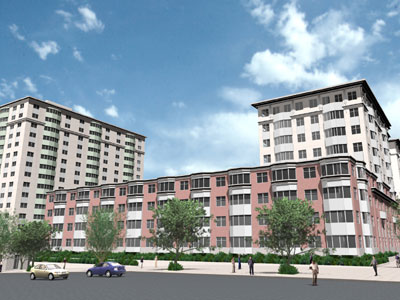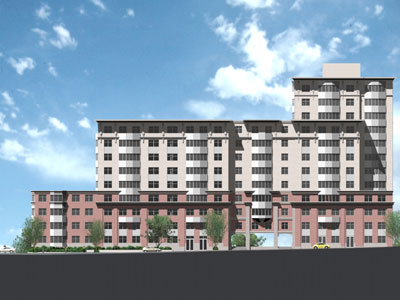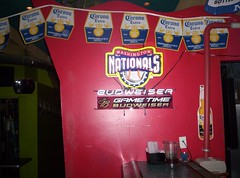I know that the business of Washington is development...
but Dana Hedgpeth, who covers the development beat for the Washington Post business section, ought to consider talking to people who care about urban design, not just putting up four walls and a roof.
In the debacle of the stadium parking structure issue (I wrote about this on Saturday but the computer crashed), she quotes Ron Cohen, who owns property over there. From the subsection, "Grumbling About Garages," from the column titled "Retirement Home Site Tempts Developers":
But not everybody thinks that the parking structures are such a terrible idea. "It's not going to be good, bad or indifferent," said Ronald Cohen, a Rockville-based developer who plans to build 840,000 square feet of condominiums and apartments near the stadium. "It would have been nice to have buildings lining the parking but there's so much activity and energy in that corridor that it doesn't make a heck of a difference one way or the other."
This from a guy who makes most of his money from ugly boxes on Rockville Pike, where every building is fronted by parking lots, and people don't walk to any of the buildings at all. (How often do you see people walking on Rockville Pike between White Flint and Twinbrook anyway? That's where Cohen's buildings are.)
Energy and activity just doesn't come from buildings, but from a careful attention to the rhythm of the street. It certainly doesn't come from a cesspool of traffic.
Superblocks and supersized buildings, for the most part, at the ground level, subtract from the street, unless a great deal of attention is paid and expended. And even if it is, I can't think of examples where superbuildings and superblocks have active and vital streets.
It's why blocks downtown are for the most part dead, despite the thousands of people working in the buildings on those blocks.
The BUTT-UGLY Cohen Development on Square 749, eased through the approval process likely with some grease here and there, where ANC6C completely dropped the ball led to my dropping off the ANC6C Planning and Zoning Committee because I couldn't take it anymore. See this blog entry "The Agony of Defeat," for my lament. Renderings, 200 K Street NE, Washington, DC. Source: FLGALLC Real Estate Group, partners with the Cohen Companies on this project. The 200 K Street NE project is particularly galling. When finished it will occupy an entire square. It will look the way it will look for decades. Despite my efforts, the committee worked hard to ignore the banality of the design. They succeeded, and the neighborhood will be poorer for their lack of effort. (But then its not all their fault. What about the Zoning Commission and the Office of Planning?)
Renderings, 200 K Street NE, Washington, DC. Source: FLGALLC Real Estate Group, partners with the Cohen Companies on this project. The 200 K Street NE project is particularly galling. When finished it will occupy an entire square. It will look the way it will look for decades. Despite my efforts, the committee worked hard to ignore the banality of the design. They succeeded, and the neighborhood will be poorer for their lack of effort. (But then its not all their fault. What about the Zoning Commission and the Office of Planning?)
Suburban style design should not be deemed acceptable in the city of Washington. This project is particulary important in understanding that quality design for residential buildings is essential. Unlike commercial buildings, which these days seem to have a useful life of 40 years or less, the facades of residential buildings are unchanging.
Index Keywords: urban-design-placemaking




0 Comments:
Post a Comment
<< Home